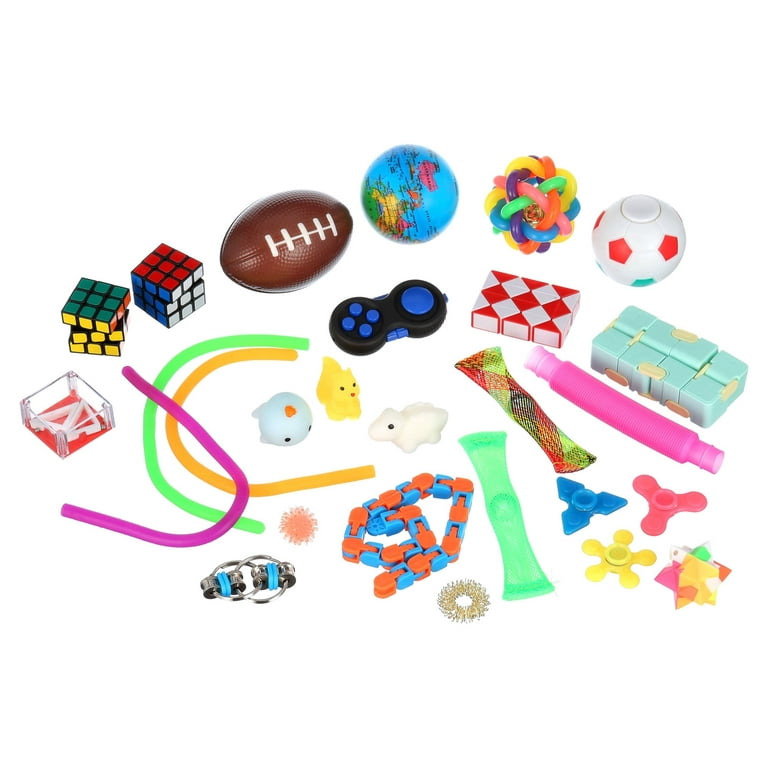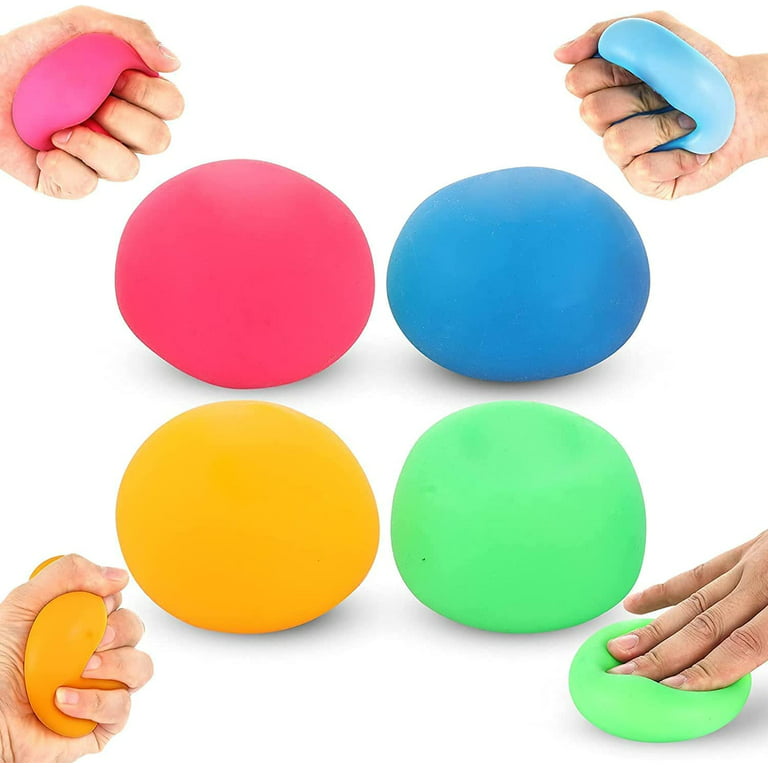Introduction
Understanding and managing ADHD in kids can be a challenging journey for both parents and the children themselves. One helpful strategy for managing symptoms and promoting healthy development is through play. Toys specifically designed to engage and support the unique needs of ADHD kids can be valuable tools in their development. In this article, we’ll explore the best toys for ADHD kids and how they can help them thrive.
Part 1: Sensory Toys
Level 1: Sensory toys are designed to engage a child’s senses, offering tactile, visual, and auditory stimulation. For kids with ADHD, these toys can help them focus, regulate their emotions, and provide a calming effect. Examples of sensory toys include fidget spinners, stress balls, and tactile sensory boards.
Level 2: Weighted blankets and vests are also popular sensory toys that can provide deep pressure stimulation, helping ADHD kids feel more grounded and focused. These toys can be especially helpful during times of stress or overstimulation.
Part 2: Movement-Based Toys
Level 1: Kids with ADHD often have excess energy and a need for movement. Movement-based toys such as jump ropes, mini trampolines, and balance boards can provide an outlet for this energy, helping them release tension and improve their focus.
Level 2: Bouncing balls and sit-and-spin disks are examples of toys that offer continuous movement, allowing kids to fidget and release energy while still staying engaged in an activity. These toys can be beneficial for promoting better concentration and self-regulation.
Part 3: Educational Toys
Level 1: Educational toys that promote learning through play can be beneficial for kids with ADHD. This can include puzzles, building blocks, and interactive learning games that help improve cognitive skills, problem-solving abilities, and attention span.
Level 2: STEM toys, such as robotics kits and coding games, can be particularly engaging for ADHD kids. These toys provide a hands-on learning experience that can foster creativity, critical thinking, and perseverance – all valuable skills for children with ADHD.
Part 4: Calming Toys
Level 1: Calming toys are designed to provide a sense of comfort and relaxation for kids with ADHD. This can include soothing sensory bottles, cozy weighted stuffed animals, and calming sound machines that create a peaceful environment.
Level 2: Aromatherapy diffusers and essential oils can also be incorporated as calming tools for ADHD kids. Certain scents, such as lavender and chamomile, are known for their calming effects and can be used to create a soothing atmosphere at home.
Part 5: Social and Group Play Toys
Level 1: Encouraging social interaction and cooperative play is important for the development of ADHD kids. Toys that promote group activities, such as board games, cooperative building sets, and sports equipment, can help foster social skills, teamwork, and communication.
Level 2: Role-playing and imaginative play toys, such as dress-up costumes and playhouses, can also support the social development of ADHD kids. These toys provide a platform for creative expression, problem-solving, and collaborative play experiences.
Part 6: Interactive Toys for ADHD Kids
Interactive toys can be incredibly beneficial for children with ADHD. These toys engage a child’s attention and encourage active participation, which can help them focus and develop important social and cognitive skills. Interactive toys such as building sets, board games, and interactive puzzles can provide a structured and stimulating activity for ADHD kids, helping them to channel their energy in a positive and productive way. By engaging in interactive play, children can learn problem-solving skills, enhance their creativity, and improve their ability to follow rules and take turns. These toys can also promote social interaction and teamwork, which can be particularly beneficial for children with ADHD who may struggle with social skills.
One good example of an interactive toy for ADHD kids is a marble run set. This type of toy encourages children to problem solve and use their creativity to build unique tracks for the marbles to follow. It also enhances their focus and concentration as they watch the marbles travel through the maze-like tracks they’ve built.
Another example of an interactive toy is a cooperative board game, which requires players to work together to achieve a common goal. This type of game can help ADHD kids practice cooperation, communication, and strategic thinking while having fun and staying engaged.
By incorporating interactive toys into a child’s playtime, parents and caregivers can provide a supportive and stimulating environment that can help children with ADHD learn and grow. It’s important to choose toys that are age-appropriate and suit the child’s interests and abilities, and to provide clear guidance and support as needed.
Part 7: Sensory Toys for ADHD Kids
Sensory toys are a great way to help children with ADHD calm and focus themselves. These toys are designed to stimulate the senses, providing a soothing and therapeutic experience that can help reduce anxiety, improve focus, and regulate emotions. Sensory toys come in various forms, such as fidget spinners, squishy toys, tactile balls, and weighted blankets, and are designed to provide a calming and grounding effect for children with ADHD.
Fidget spinners, for example, have gained popularity as a sensory toy for kids with ADHD. These small, hand-held devices have a spinning mechanism that can help distract and calm a child’s restless energy while promoting focus and concentration. Tactile balls and squishy toys can also provide a calming sensory experience for ADHD kids, allowing them to squeeze and manipulate the toy to help regulate their emotions and reduce stress.
Weighted blankets are another type of sensory toy that can benefit children with ADHD. These blankets provide gentle, deep pressure touch that can help calm the nervous system and improve relaxation and focus. Many children with ADHD find comfort in the soothing sensation of a weighted blanket, which can help them feel more grounded and at ease, especially during periods of hyperactivity or restlessness.
By incorporating sensory toys into a child’s daily routine, parents and caregivers can provide a supportive environment that can help children with ADHD manage their symptoms and improve their overall well-being. It’s important to choose sensory toys that are safe and appropriate for the child’s age and preferences, and to encourage their use in moments of stress or overstimulation.
Part 8: Outdoor Toys for ADHD Kids
Outdoor play can be incredibly beneficial for children with ADHD, as it allows them to release pent-up energy, improve focus, and engage in physical activity. Outdoor toys can provide a structured and stimulating environment for ADHD kids, helping them to channel their energy in a positive and productive way. These toys can also help children with ADHD develop important motor skills, coordination, and socialization, while promoting a sense of well-being and connection to nature.
One great example of an outdoor toy for ADHD kids is a trampoline. Bouncing on a trampoline can provide a fun and effective way for children to release excess energy, improve their balance and coordination, and enhance their overall physical fitness. Trampolines can also provide a calming and soothing sensory experience for children with ADHD, which can help them feel more grounded and at ease.
Another example of an outdoor toy is a swing set. Swinging can provide a therapeutic effect for children with ADHD, as the rhythmic motion can help them regulate their emotions and reduce stress. Swinging can also help improve focus and concentration, as the repetitive motion can have a calming and centering effect on the child’s nervous system.
By incorporating outdoor toys into a child’s playtime, parents and caregivers can provide a supportive and stimulating environment that can help children with ADHD learn and grow. It’s important to choose outdoor toys that are safe and appropriate for the child’s age and abilities, and to provide clear guidance and supervision as needed. Outdoor play can also provide a natural and healthy outlet for ADHD kids to expend their energy and improve their overall well-being.
Conclusion
Toys play a crucial role in the development and well-being of ADHD kids. By choosing toys that specifically cater to their unique needs and challenges, parents and caregivers can provide valuable support and opportunities for growth. From sensory toys and movement-based toys to educational and social play toys, there are countless options available to help ADHD kids thrive through play. By incorporating these toys into their daily routines, parents can create an environment that promotes positive behavior, focus, and overall well-being for their children.







